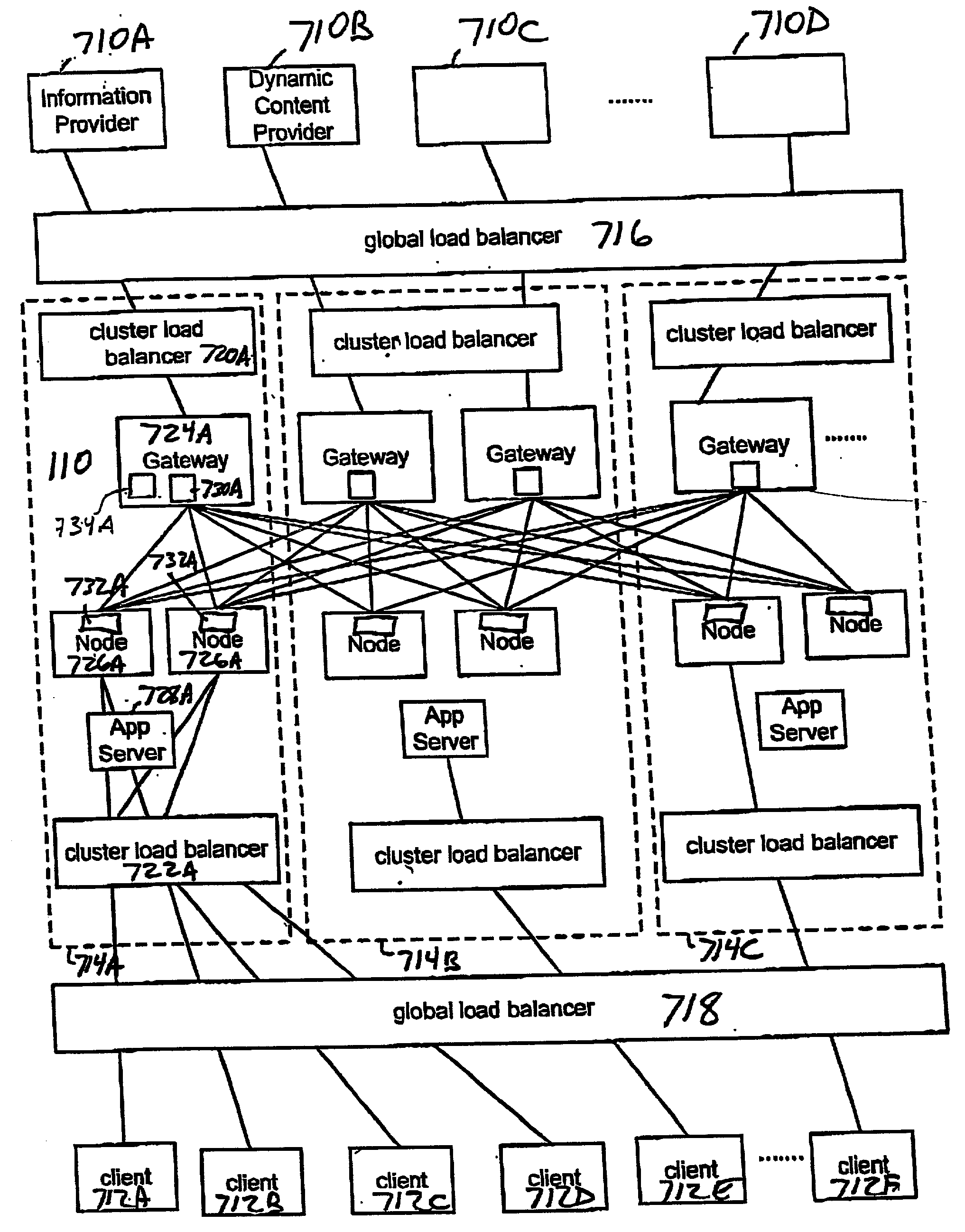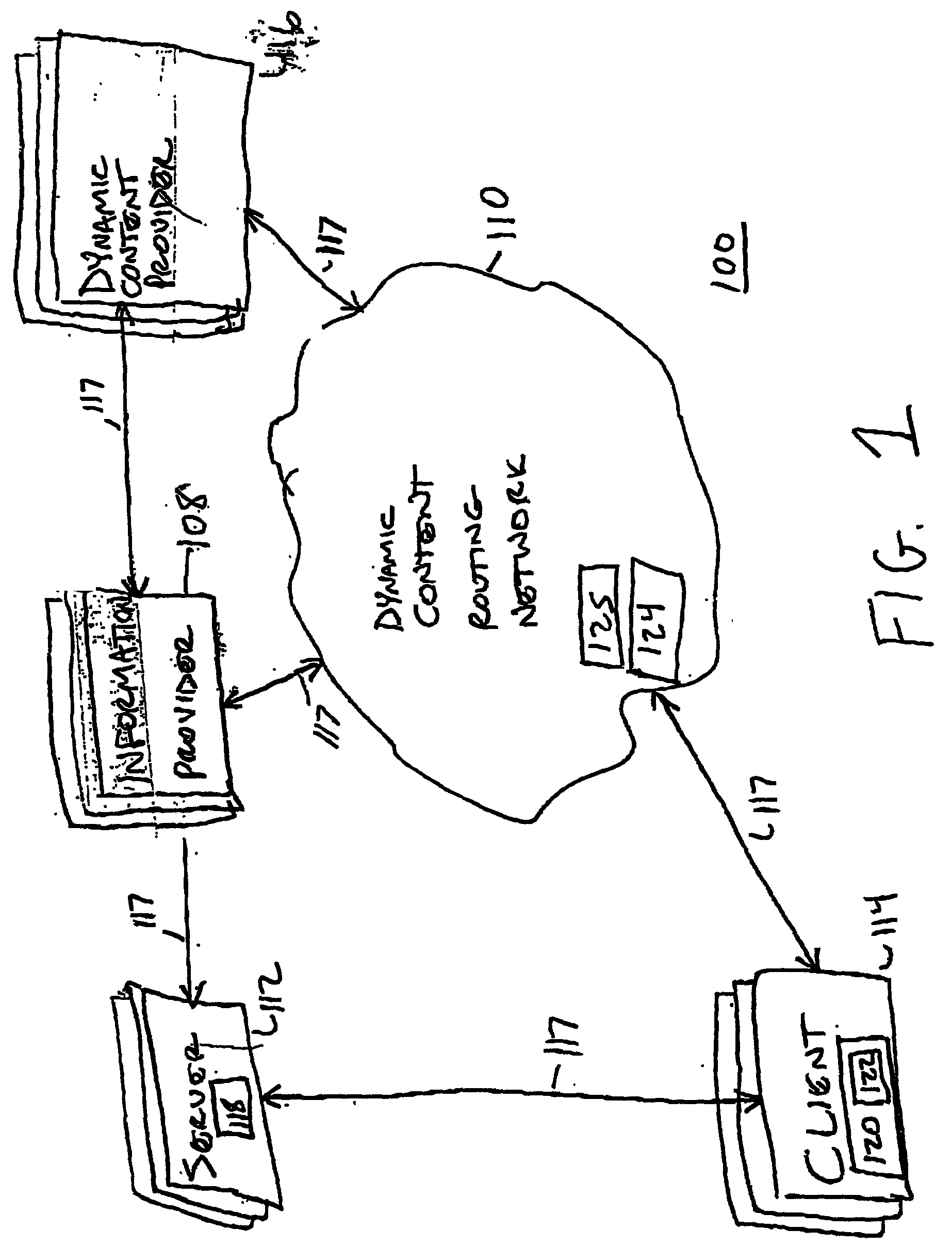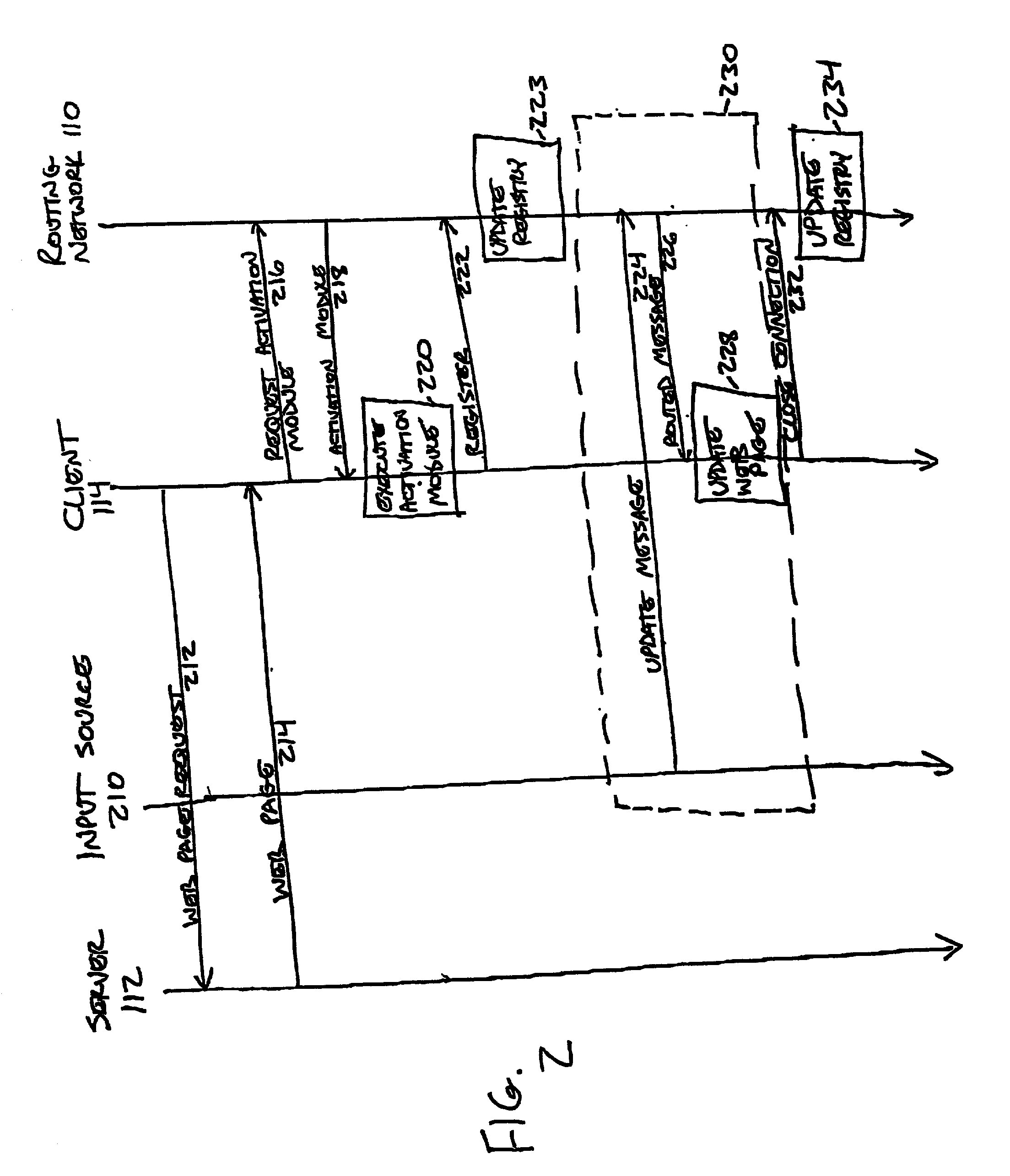Asynchronous messaging using a node specialization architecture in the dynamic routing network
a dynamic routing network and node specialization technology, applied in the field of transferring information through digital, can solve the problems of server not being able to inform the client device, the web suffers from a substantial limitation in dynamically updating content in a web page, and the server cannot use the bandwidth efficiently. to achieve the effect of efficiently utilizing bandwidth
- Summary
- Abstract
- Description
- Claims
- Application Information
AI Technical Summary
Benefits of technology
Problems solved by technology
Method used
Image
Examples
second embodiment
[0076] There are various ways to internally represent the games and scores in the web pages using live objects. In one embodiment, a “game” object is defined having properties for the two teams involved in the game and the score associated with each team. The game object is placed at a selected position in the web page and the properties of the object cause the information about the game to be displayed on the page. In another embodiment, “team” and “score” objects are defined, with the team object having a property defining the name of a team and the score object having a property defining a score. In this second embodiment, the team and score objects are placed at selected locations on the page so that the proper teams and scores are aligned when the page is rendered. In yet another embodiment, an object is defined having properties for the name of one team and a score associated with that team. Then, pairs of the objects are placed in the page in the proper alignment to indicate ...
third embodiment
[0119]FIG. 9 illustrates the variation where the nodes store the client registration information, and the client proxy 740 is adapted to pass messages and registration information among the clients and nodes. When a client sends registration information to the client proxy 740, the client proxy passes it to the appropriate node or nodes. In one embodiment, the client proxy 740 sends client registration information to at least one node of every type, and the nodes ignore irrelevant registration information (e.g., registrations for messages of categories not handled by the node). In another embodiment, the client proxy 740 itself analyzes the registrations, and passes only registrations relevant for a given node type to a node of that type. In a third embodiment, the client contains functionality for determining which node types handle which registration requests, and the client tells the proxy 740 to which node types to pass the registration information.
[0120] The client proxy 740 pr...
PUM
 Login to View More
Login to View More Abstract
Description
Claims
Application Information
 Login to View More
Login to View More - R&D
- Intellectual Property
- Life Sciences
- Materials
- Tech Scout
- Unparalleled Data Quality
- Higher Quality Content
- 60% Fewer Hallucinations
Browse by: Latest US Patents, China's latest patents, Technical Efficacy Thesaurus, Application Domain, Technology Topic, Popular Technical Reports.
© 2025 PatSnap. All rights reserved.Legal|Privacy policy|Modern Slavery Act Transparency Statement|Sitemap|About US| Contact US: help@patsnap.com



